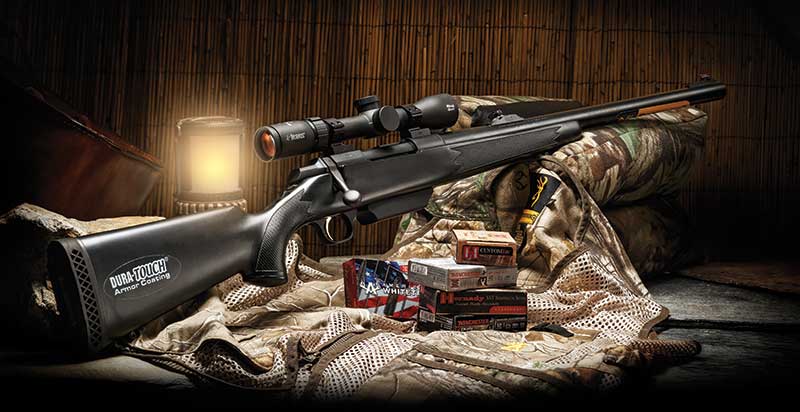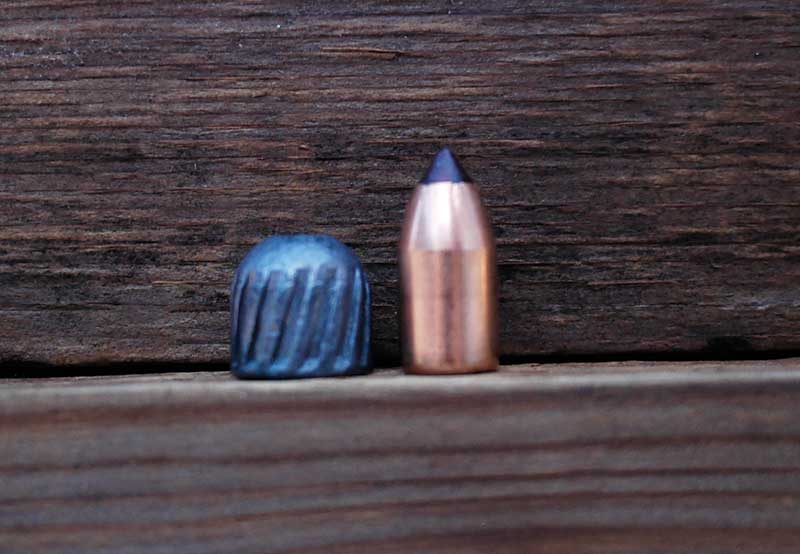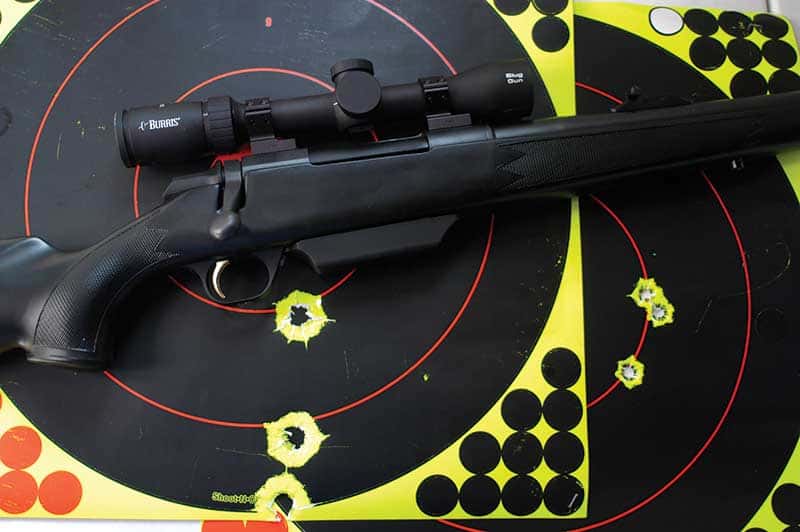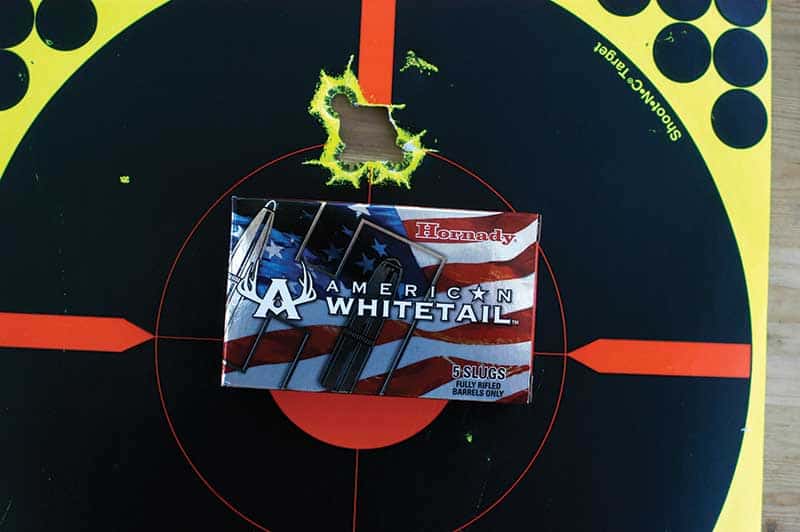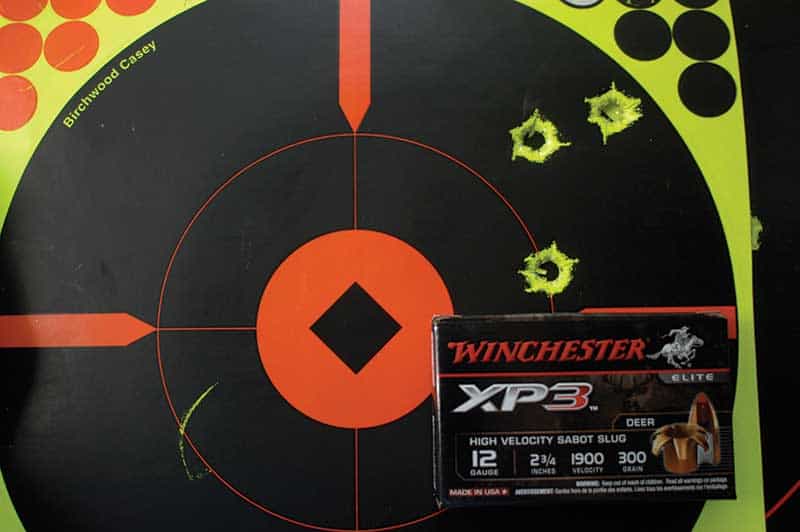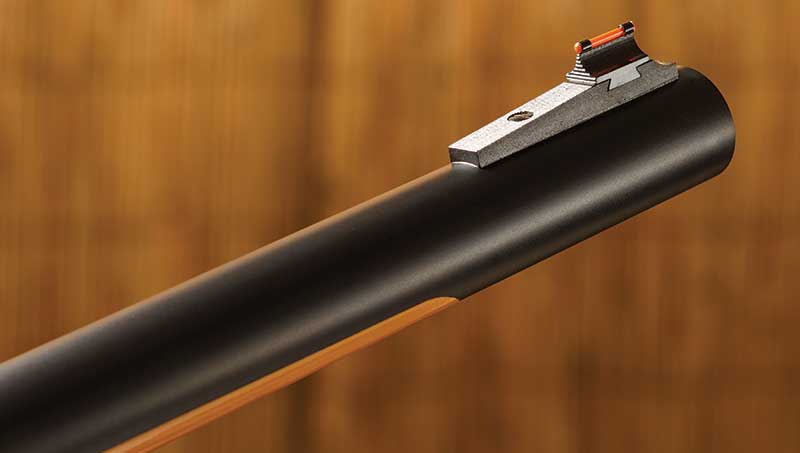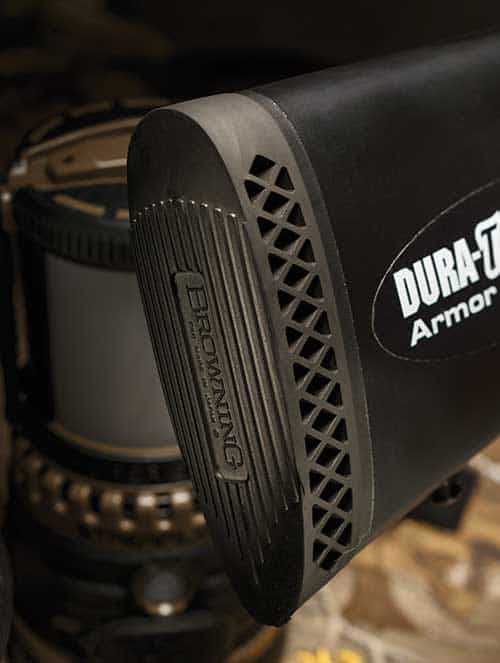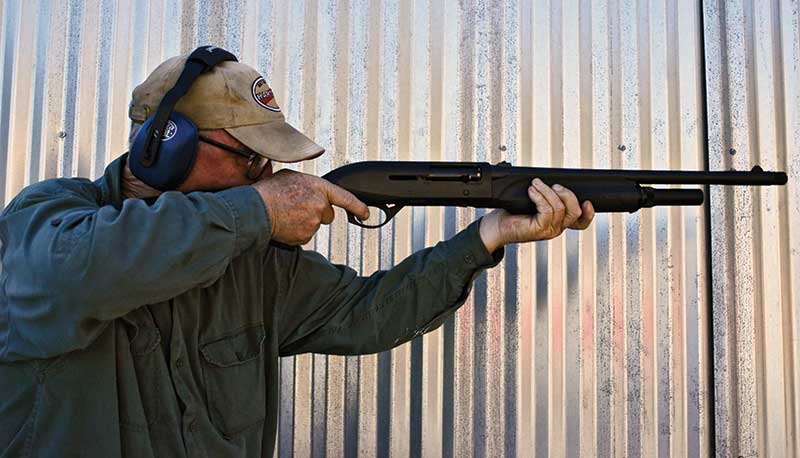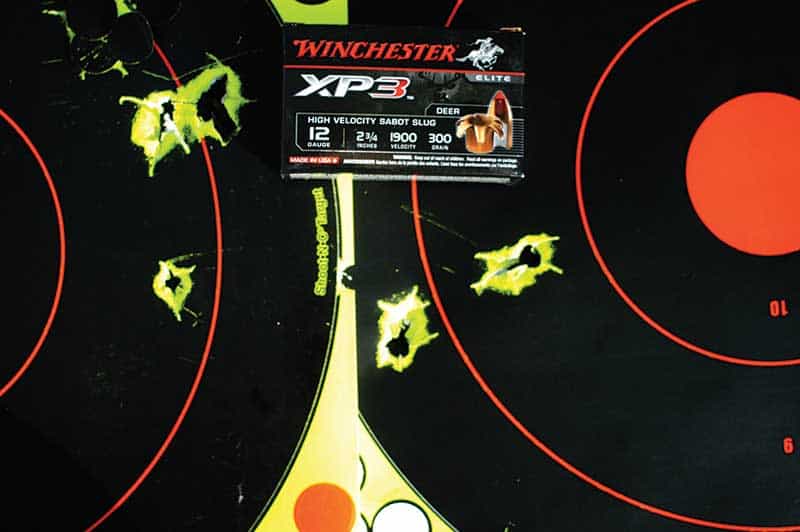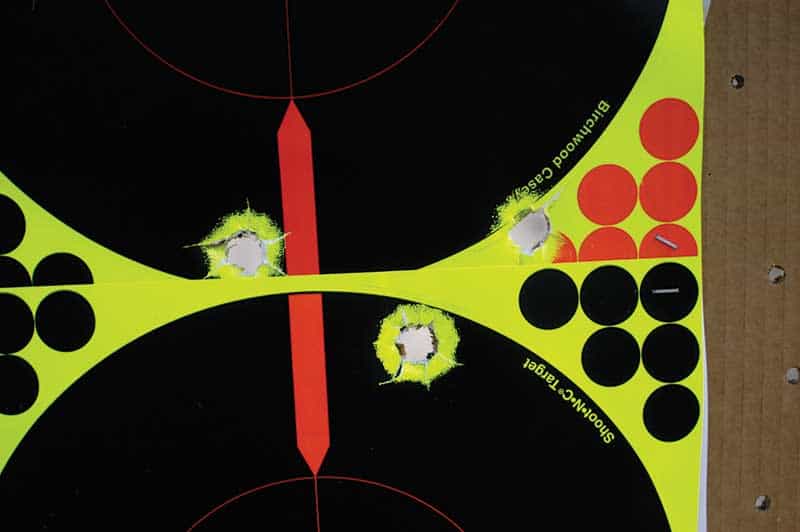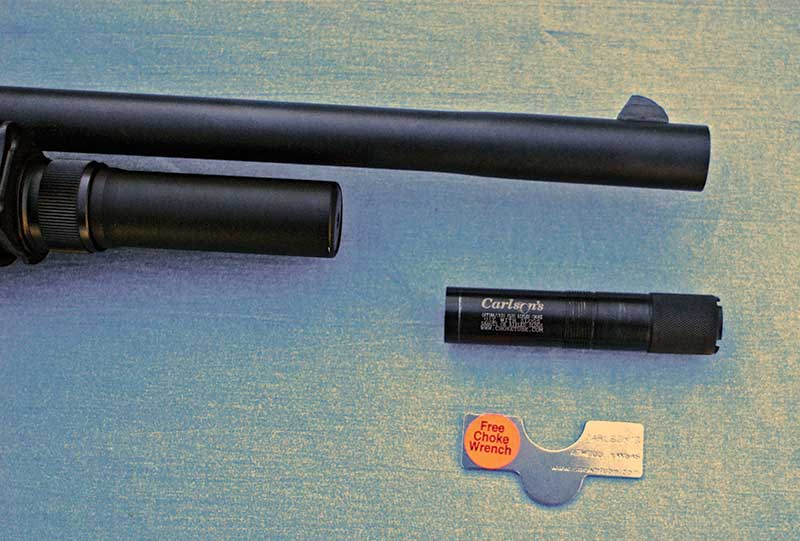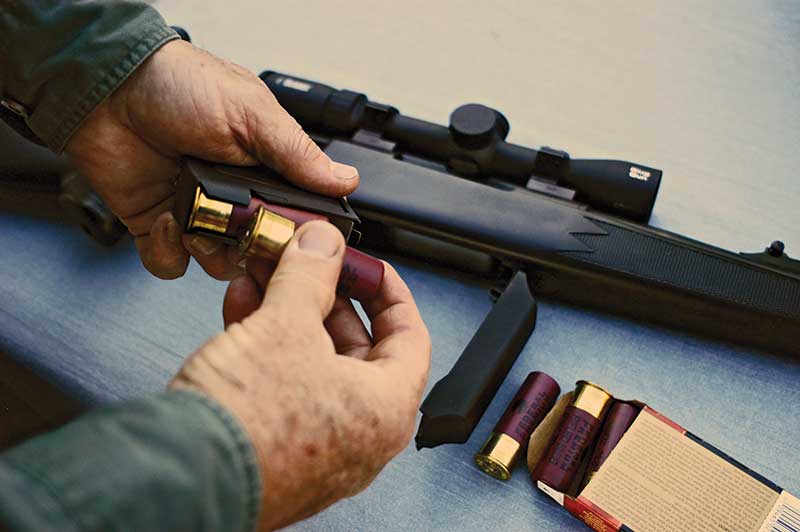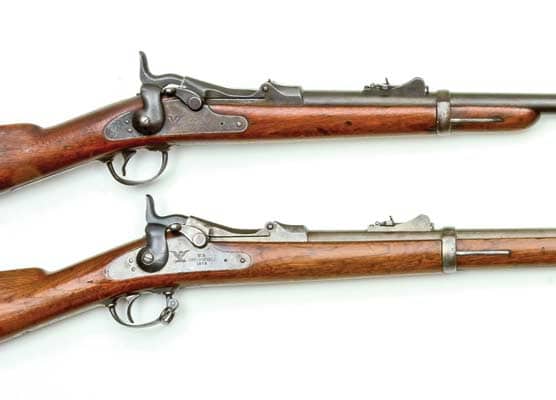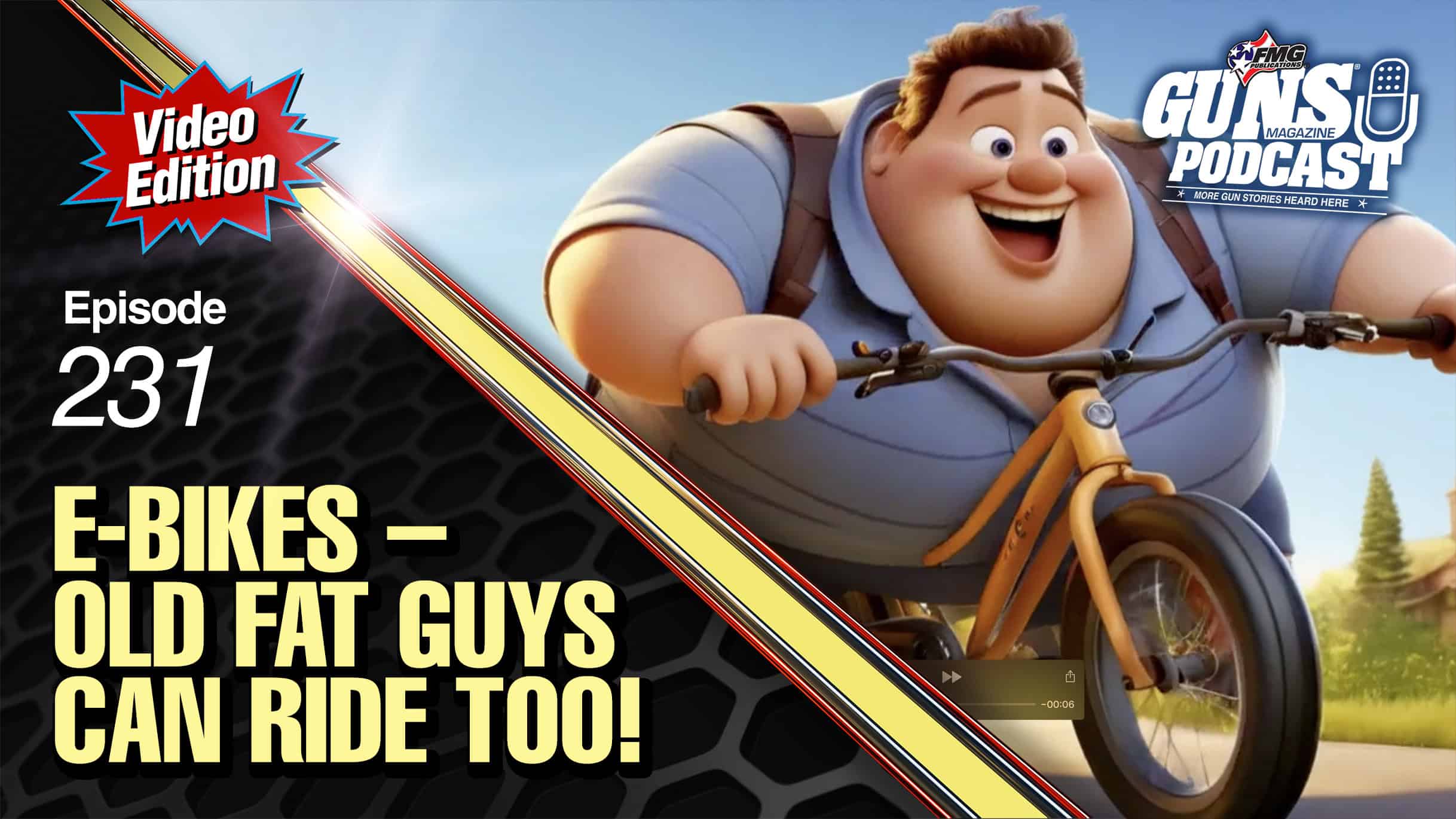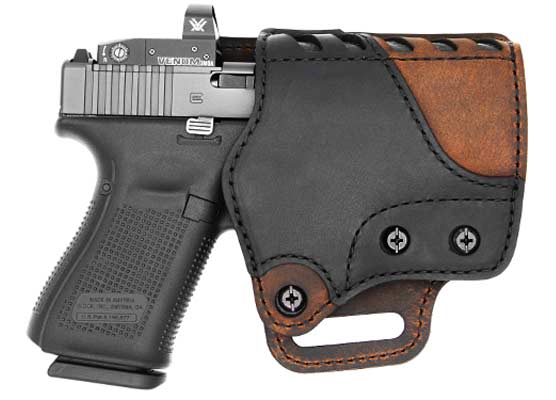Slugging Away
Sabot Or Rifled? Smoothbore Or Not?
What Kind Of Accuracy Can You Expect In
A Mix-And Match At The Range?
A lot of states and individual counties—including a few with serious “big buck” reputations—stipulate the use of shotgun slugs for deer. To those who grew up in rifle states, this may sound like a handicap. But when you consider the real-world ranges most whitetail is taken at, not so much.
The advances in shotgun slugs in the past couple decades may not have the same sex appeal compared to rifle and handgun ammo, but advances have been considerable. The time-honored Foster-type rifled slug has been overshadowed by sabot slugs, featuring—essentially—sub-caliber (usually .50 in 12-gauge), streamlined “bullets,” often polymer tipped and specifically designed and advertised to be used with rifled barrels.
And although we use the term “rifled slug,” we should acknowledge one thing right here from the outset: the grooves giving them their name don’t spin them so much as they permit them to squeeze through different barrels and chokes.
It was just this rifled slug/sabot distinction which got us to thinking. What would happen if we used “for smoothbore barrel” rifled slugs in a rifled barrel or “for rifled barrel” sabots in a smoothbore? Exactly what is the “crossover potential” of both types? When you see the caveat “For Rifled Barrels Only” or “For Smootbore Barrels Only” on a 5-pack of slugs, does it really mean that?
Well, generally speaking, of course it does. But we kind of wanted to find out to what degree, so we decided to shoot a bunch of current slug loads from a scoped, rifled-barrel Browning A-Bolt Stalker topped with a Burris Droptine 2-7X Slug Scope and an open-sighted Benelli Tactical M2 smoothbore. We wanted to see what loads—whether high-tech polymer-tipped sabot or chunky, traditional rifled slugs—gave what kind of results in both guns.
All our slug loads were 2-3/4-inch 12-gauge. It is possible, of course, to buy 3-inch slug loads if you’re so inclined. Winchester, for example, offers a 3-inch version of their 375-grain Dual Bond sabot load. You’ll get about an extra 50 fps over the 2-3/4-inch version. Whether or not that’s worth it to you is a personal matter. But for me the answer is a resounding no. Anyway, considering the amount of bench time we anticipated, passing on 3-inch stuff was a no-brainer.
To throw in a kicker, we wanted to find out how a rifled choke tube in the Benelli would handle both types as well. So we got hold of a Carlson’s rifled tube to determine what the results would be in the overall mix. Obviously, there are a lot of deer hunters out there in shotgun-only areas who are still happily putting their favorite duck or pheasant gun to double duty. Not everyone is going to invest in a fully rifled, dedicated slug gun, so we wanted to see the advantages a rifled tube might bring to the table.
Both guns we used had excellent recoil-absorbing characteristics—the A-Bolt by virtue of its excellent recoil pad, the Benelli by virtue of its ComforTech stock, not to mention its semi-auto inertia action (more kick than a gas gun, still less than a bolt or pump). But a slug is a slug is a slug, although there is some difference between firing a 300- or 350-grain sabot load (essentially a bullet) and a 1- or 1-1/8-ounce slug. But to be honest, when you approach 2,000 fps with a sabot load, the weight differential becomes less and less noticeable in terms of comfort.
The scoped A-Bolt also had an excellent “un-shotgunny” 3-pound trigger, although the Benelli’s trigger, heavier and a tad spongier, was certainly serviceable. At any rate, our menu of sabot slugs ranged from 300 to 375 grains in weight. Rated velocities ranged from 1,600 to 2,000 fps. Our two rifled slugs were nearly identical numbers wise—both were 1-ouncers, with a factory-rated velocity of 1,600 fps.
Why did we simply stick with factory-rated velocities instead of breaking out our own chronograph? Well, assorted plastic elements exit the barrel along with the slug and do so erratically—with surprising force. This will result in a wrecked chronograph (been there, done that, got the t-shirt). In fact, I’ve seen plastic sabots recovered from hogs taken at very close range.
One way to avoid the inevitable beating is to switch to a 20-gauge. In fact, a lot of deer hunters I met in Illinois have done just that, not only to provide their wives and kids with a less-kicky option during deer season, but for “personal reasons” as well.
My field experiences with slug guns have been fairly limited but what little there’s been has revolved around a 20-gauge. The longest successful shot I ever made was with a scoped Winchester M1300 Slug Gun. It had a rifled barrel, and we were using a Winchester sabot slug load (it was nearly 15 years ago and the exact type is, by now, beyond my recall).
With this combination, I took a medium-size hog at 90 yards and it performed spectacularly. The longest shot I saw anyone connect on with the same setup was about 120 yards, and it seemed about as effective as a .45-70 at that yardage. Personally, that’s as far as I’d ever consider taking a shot with any slug gun, regardless of gauge or slug type, but I’ve heard some pretty impressive stories from other shooters.
To return to the recoil factor, there is another way to lessen it without stepping down in bore size. Hornady’s Custom Lite 12-gauge slug load, featuring an aerodynamically superior 300-grain FTX at a bit over 1,500 fps has plenty of speed and significantly less recoil. Hornady claims 40 percent less recoil and after several 5 packs of the stuff—compared with their full-pop 2,000 fps FTX number—I believe them.
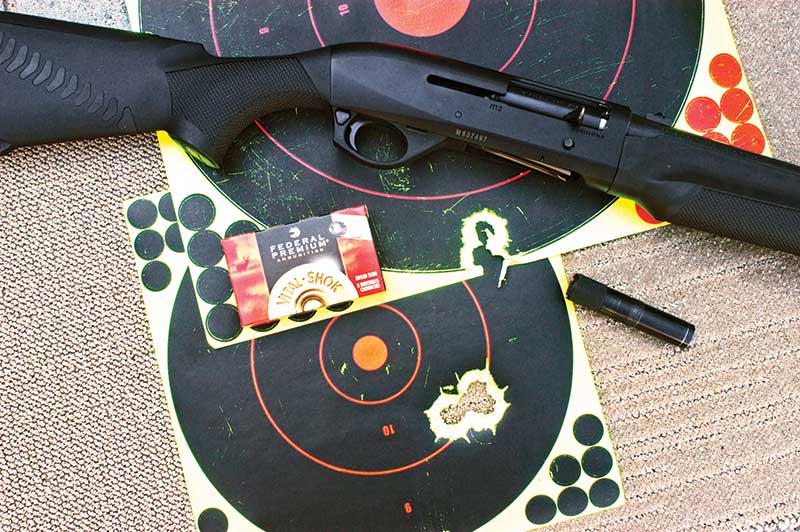
The surprise in terms of performance turned out to be the Benelli M2/Federal
TruBall combination with a Carlson’s rifled choke tube installed. The bottom group
is at 50 yards. The top one at 100 is considerably below point of aim, but pretty good
for open rifle sights—and markedly superior to what we got with the gun’s standard
I/C smoothbore tube at that distance. (
We shot them out of our scoped A-Bolt at 50 and 100 yards. According to the tables, putting it 4-1/2 inches high at 100 will put you dead on at 150—not too exciting by the standards of rifle trajectory, but, hey, for a lightened-up 300-grain sabot load, we’ll take that all day.
The upshot of all our A-Bolt shooting? If you’re shooting a dedicated rifled-barrel slug gun at 50 yards or so, it really doesn’t matter from a practical standpoint what kind of slug you’re using. In fact, one of our better 50-yard groups with the A-Bolt came with Federal TruBall. As yardages increase, however, the sabot pulls ahead. So if you anticipate situations where you might have to take a poke appreciably past 100 yards, you’d best go with a sabot. And you really should try as many loads as possible to determine what’s going to give you the best odds out there.
All of our sabot loads were definitely “whitetail good” at 100 yards. But some rifled barrels are simply going to like some loads better than others. It’s practically mandatory to get a couple of 5-packs and do some bench time to find out what your gun groups best with. Our A-Bolt Stalker proved quite capable of sub-2-inch groups with Winchester XP3 and Hornady American Whitetail sabots at 100 (the best was right at 1-1/2 inches).
Rifled slug performance with Federal TruBall at that yardage fell off considerably from what we saw at 50 yards, ranging from 4 to nearly 6 inches—maybe past the ragged edge of acceptability from a deer rifle, but enough to land a slug in a deer’s chest cavity rather conclusively. The Winchester HP rifled slugs were a tad better overall. But neither one of them convinced us they’d be a reasonable choice for trying to bag a deer much past 100 yards, even from as “deer specific” a tool as the A-Bolt Stalker.
Rifled Choke Tubes
When we were planning this entire exercise out, our plans for the Benelli were fairly simple. We wanted to compare 50-yard results with both types of slugs with an I/C choke tube installed, then switch out the I/C tube for our rifled tube to see what the difference in group size would be. Then we wanted to see if any loads did well enough at 50 yards to make them worth trying at 100 yards.
We tried the Benelli at 50 and 100 yards, using both Foster-type and sabot slugs. We did this first with the standard IC choke tube, then with an extended Carlson’s rifled choke tube. At 50 yards, the difference in 3-shot group size was minimal with Winchester’s XP3 sabot load only slightly less tight with the I/C tube in place. At 100 yards, the Carlson’s rifled choke tube really pulled away—groups ran from 4 to 6 inches with the Hornady FTX sabot. Groups with the standard I/C tube were two or three times bigger.
But even at 50 yards, there were definite indications of insufficient stabilization, which could compromise the terminal effects on game. All the performance advantages of a high-speed pointy sabot load aren’t going to produce the advertised effect if it doesn’t hit “point on.”
The real eye-opener, however, came with the Federal TruBall stuff. At 50, we got one ragged (OK, a bit elongated) hole. At 100 we got just about the same thing although admittedly quite a bit lower. It would appear that the TruBall—despite its smoothbore pedigree—seemed to benefit from a couple inches worth of rifling at the end. Just a bit of it appeared to help things out more than a fully rifled ride from the A-Bolt at that distance. So the real value of a rifled choke tube would seem to be for the guy who would rather use his “do-it-all” shotgun on deer provided the distances were reasonable. But at really “shotgunny” ranges, the right rifled slug would certainly group well enough without one.
Although it was pretty easy for the Benelli to ring the 100-yard “bad guy” sized torso silhouette gongs with either the Federal TruBall or Winchester HP through the I/C tube, there’s quite a bit of difference between humanely taking a deer at that yardage and dealing with a defensive emergency. This is more than likely a function of the Benelli’s open sights (which are, truth be told, easier to acquire than the rather wispy traditional buckhorn arrangement on a tube-magazine levergun) than the actual projectile.
We found ourselves frequently having to “hold off” in order to hit with them. A ghost-ring, red-dot optic or scope would have been better still. In fact, a pretty good case could be made for using a serious turkey gun. It would allow for a more sophisticated sighting arrangement than was possible with our Benelli M2 Tactical, plus the rifled choke tube option.
But in this day and age, anyone sticking a conventional scope on a deer gun is more than likely going to install it on a dedicated, rifled-barrel one. After all, what’s wrong with having a slug gun, a turkey gun, a duck gun, an upland gun and a clays gun? Nothing!
Droptine 2-7X
Maker: Burris Optic
Magnification: 2-7X, Objective diameter: 35mm, Eye relief: 3.1-4.1 inches, Internal adj. range: 60 inches elevation, 60 inches windage at 100 yards, Click value: 1/2 MOA, Tube diameter: 1 inch, Weight: 12 ounces, Overall length: 11.4 inches, Reticle: Ballistic Plex, Price: $179
A-Bolt Stalker
Maker: Browning
Type: Bolt-action repeater, Gauge: 12 (3-inch chamber), Barrel length: 22 inches, Overall length: 43-3/4 inches, Capacity: 2+1 (detachable box magazine), Weight: 7 pounds, Length of pull: 14 inches, Sights: Open adjustable rear, TruGlo fiber-optic front (cantilever scopemount available), Finish: Blued/matte black, Stock: Black composite, Price: $1,149.99
M2 Tactical
Maker: Benelli USA, 17603 Indian Head Hwy, Accokeek, MD 20607, (800) 264-4962
Type: Inertia-driven semi-auto, Gauge: 12 (3-inch chamber), Capacity: 5+1,
Barrel length: 18-1/2 inches, Overall length: 39-3/4 inches, Weight: 6.7 pounds, Stock: ComforTech (pistol-grip or standard available), Sights: Open rifle-type (ghost ring available), Finish: Matte black, Price: $1,469 (as tested)
A Few Observations
It’s always risky to make sweeping statements without hedging your bets a little. So here goes:
First the obvious—shotguns are not rifles. If this were not true there would be no “shotgun-only” deer zones. Given the loads and guns we used, a couple of things became apparent to us.
• At 50 yards with our scoped A-Bolt Stalker, it really didn’t matter whether we used a sabot or rifled slug. Any deer would have been freezer-bound.
• At 100 yards you should use sabots in a rifled barrel. If not, use the rifled slug that groups well enough there. If you don’t have any, get sabots.
• If you envision shooting past 100 yards, sabot loads from a rifled barrel should be mandatory. And again, pick the right one for your gun and learn its trajectory. They drop rather precipitously. A rangefinder would be a good idea.
• The advantages of a rifled choke tube become more apparent past 50 yards with rifled slugs in a smoothbore. Up to 50, the advantages for us were somewhat less.
• At 50 yards or—more likely—anything significantly under, your smoothbore may be capable of hunting accuracy using a sabot load whether you employ a rifled choke tube or not. But unstabilized keyholing can seriously wreck game performance. And why pay premium money for sabot loads to have that happen?
• When shooting 12-gauge slugs from the bench, make use of any gizmo you can to make it more tolerable—lead sled, “sissy bag,” P.A.S.T. recoil shield, elbow pads, whatever. If you don’t, you’ll never have much patience for the term “perceived recoil” ever again. It’s the real thing!
